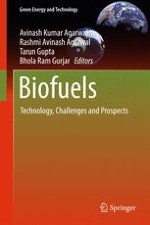2017 | OriginalPaper | Chapter
Response Surface Methodology Based Multi-objective Optimization of the Performance-Emission Profile of a CI Engine Running on Ethanol in Blends with Diesel
Authors : Probir Kumar Bose, Vijay Narayan Bodkhe, Bishop Deb Barma, Rahul Banerjee
Published in: Biofuels
Publisher: Springer Singapore
Activate our intelligent search to find suitable subject content or patents.
Select sections of text to find matching patents with Artificial Intelligence. powered by
Select sections of text to find additional relevant content using AI-assisted search. powered by
